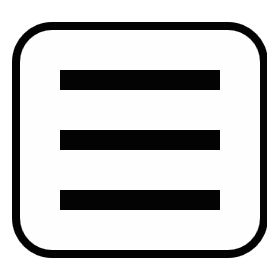Overview
During 2008, a committee of faculty and administrators was formed to review the three existing college-wide associate degree competencies (Writing, Critical Thinking, and Computer Fluency), in order to revise and update them as necessary. The committee was further charged with creating a broader vision for general education, applicable to all students at NECC. Ultimately, this vision included the identification of core skills expected to be developed by students in the course of their studies. The end product was a document entitled, A Vision for Core Academic Skills at Northern Essex Community College. This document was widely distributed and discussed, and endorsed by members of the college community.
In their current form, the skills are as follows:
- Global Awareness
- Information Literacy
- Public Presentation
- Quantitative Reasoning
- Science & Technology
- Written Communication
Annual Assessments
Each year, one or more of these skills are assessed at the institutional level. The following reports provide these institutional-level assessments.
Institutional Assessment of Global Awareness
The assessment of Global Awareness was planned for AY 2019-2020. Students with at least 45 earned credits prior to the start of the fall 2019 semester were eligible for artifact submission. All faculty were invited to see which of their students were eligible for submission by utilizing a new Tableau dashboard designed by our Dean of Institutional Research and Strategic Planning. The dashboard removed the need for a single person to determine and communicate which students were eligible. The dashboard is directly connected to our student data systems making it easy to update at the start of each new academic year. A strong number of artifacts were submitted at the end of the fall semester. In the spring of 2020, the COVID-19 pandemic forced all classes and college operations into a fully remote mode which significantly decreased participation in artifact submission by faculty as people scrambled to address the immediate effects of the pandemic. To increase participation and ensure that artifacts reflected students’ true ability, the college chose to extend the collection period for Global Awareness through the fall of 2020. This extended timeline did yield additional submissions which will make assessment more robust. Artifacts will be assessed during the spring of 2021, with a summary of results made public by June 2021.
Institutional Assessment of Quantitative Reasoning
The committee elected to assess Quantitative Reasoning this year. As in previous years, we first determined which instructors had eligible students in their classes (students who had completed at least 45 credits prior to the beginning of the semester). Next, we contacted those instructors and asked for their voluntary participation if they were assigning papers or projects requiring students to demonstrate the learning outcomes defined by the VALUE rubric for Quantitative Literacy. Instructors who agreed to participate were contacted again later in the semester, reminding them to include a TK-20 link for collecting products or to forward clean copies of the designated students’ work for assessment. Ultimately five instructors participated in the fall semester, with 22 student artifacts collected; nine faculty members participated in the spring semester, with 101 student artifacts collected. Faculty raters noted a couple of concerns: first, the pool of artifacts was small; and second, many of the assignments given to students did not align well with the AAC&U rubric used to assess the artifacts. The scorers recommended more deliberate outreach to faculty in the area of assignment design.
Institutional Assessment of Science & Technology
The committee conducted its first institutional assessment of our Science & Technology core skill. The new rubric was sent to faculty in SP16 in order to encourage their inclusion of assignments in AY16-17 that would elicit the criteria. Because we were relying on a fairly small group of faculty, primarily from the sciences and health programs, the committee was pleased that 62 student artifacts were submitted for assessment. Three faculty, two from the sciences and one from the health sciences, acted as raters. Each student artifact was read twice, and rated on a scale of 1 – 4. N/A was used when a criteria could not be rated. Raters comments indicated that the increased frequency of N/A was often due to a lack of specificity in the accompanying assignment, an important element of feedback for our faculty as they refine their assignments in the future.

